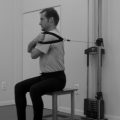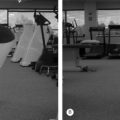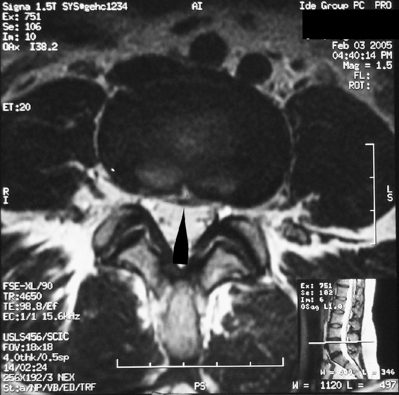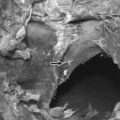CHAPTER 34 Medical Radiculopathies
Sciatica – This is often associated with rheumatism and gout, but is also frequently brought on by catching cold. Occasionally it is due to accumulations in the bowels, or to diseases of the bones through which the nerve makes its exit. The painful points are usually found back of the trochanter or most projecting point of the thigh bone, at certain spots in the thigh about the knee and ankle joints.
Medicology, a medical text published in 1905.1
HISTORY AND EPIDEMIOLOGY
Sciatica is a constant. It has been present throughout the ages. With humility, it should be noted that it is not sciatica, but the medical theories and treatment that have changed over the years … and not always to the benefit of the patient. Theories of etiology are varied across cultures and time. The equivalent of Medline in the late 1800s was an annual compilation of published research presented by the United States Surgeon General. A search on the term sciatica results in numerous ‘hits’ – articles discussing the presentation and treatment of sciatica as a self-limiting cold ‘settling’ in the back, or flu ‘residing’ in the sciatic nerve. The 1905 general medical text Medicology doesn’t even mention trauma as an etiology.1
Around the turn of the last century the field of physical medicine and rehabilitation was born. A fringe group who espoused electrical treatments of medical problems ranging from cancer to the common cold held their first annual meeting in 1890.2 Though scorned by the medical establishment, this specialty gained popularity with the people, in part due to its apparent success in treating sciatica and back problems.
As medicine advanced, management of back pain became more focused on basic scientific theory than pragmatic outcomes. New theoretical ‘causes’ for back pain and sciatica resulted in alarmingly unchallenged treatments. For example, long before the disc was implicated in sciatica, it was popular to blame sciatica on entrapment of the nerve in the piriformis muscle or on irritation from the sacroiliac joint. In 1928, Yeomans claimed success with surgical treatment of hundreds of people with sciatica and nerve damage that he related to the sacroiliac joint.3 Almost certainly, a number of these people – at least the ones with neurologic deficits – had lumbar disc herniation, a syndrome that would not be discovered for more than a decade. His patients typically recovered and were ‘cured’ in spite of his well-meaning, but wrong, interventions.
Mixter and Barr are rightly credited with proving that sciatica comes from disc herniations.4 But there is history behind this history. In the authors’ first years of practice at the University of Vermont, his senior partner Phillip Davis would often tell the story of Mixter and Barr’s first patient. This Vermonter had excruciating pain down the leg. His small-town doctor told him that it was likely ‘one of those cartilage tumors in the spine’ but that he would get better if he only waited. The disgusted patient ignored his doctor and went for a second opinion at the prestigious Harvard Medical School, where Mixter and Barr performed the first of millions of possibly unnecessary operations, paving their way to fame. More recent literature on the natural history of sciatica show us that, even today, physicians with high-sounding theoretical constructs and a big podium often win out over common sense and clinical insight.
The NHANES survey of American health indicates that about 13% of noninstitutionalized adults have back pain of more than 2 weeks duration, and about 9% of these have sciatica with back pain.5 A lifetime prevalence of 1.5% can be calculated from these studies. But other studies show that up to 40% of people suffer from sciatica in their lifetime.6,7 Regardless of the numbers, from a physician standpoint, sciatica is a very common patient complaint.
DIFFERENTIAL DIAGNOSIS
Jeffrey Saal coined the term ‘pseudo-radicular syndrome’ for the nonspinal disorders that cause sciatica-like pain.8 The causes of pseudo-radicular syndrome can be divided into musculoskeletal causes, focal neuropathies, and neuromuscular diseases.
Among the musculoskeletal causes (Table 34.1), Galm et al.9 have shown that sacroiliac pain occurs in about one-third of persons with disc herniations, and that treatment of the sacroiliac joint in these people results in relief of pain. Trochanteric bursitis is another cause of similar pain that often occurs after onset of sciatica from disc herniation.10 Swezy11 found trochanteric bursitis in 31 of 70 persons referred for evaluation of sciatica or back pain. Most think of hip arthritis in the differential diagnosis of radiculopathy in older persons. In younger persons, avascular necrosis of the femoral head, slipped capital femoral epiphysis, and other unusual hip arthritides can fool the unwary.
| INTRINSIC SPINAL CAUSES |
Paraspinal muscle inadequacy-related to previous surgery,12 deconditioning, stretch of the dorsal root,13 or focal myopathy14,15 is increasingly being reported as a cause of pain.
Focal neuromuscular disorders are not uncommon. Most worrisome are tumors and infections causing compression of the nerves or plexus. Bicknell and Johnson16 pointed out a number of characteristics of neoplastic plexopathies. They are characteristically painful; in the brachial plexus, more than 70% involve the lower trunk and are mainly due to axillary lymph node infiltration. In contrast, lumbosacral plexus neoplasms cause neuropathy by direct infiltration. They also favor the lower plexus, with 31% lumbar and 51% sacral plexus.
With a history of cancer treatment the differential diagnosis is often radiation plexopathy versus tumor.17,18 Painless and progressive weakness is the hallmark of radiation plexopathies, which typically occur in the upper trunk of the brachial plexus and in the lower part of the lumbosacral plexus. In the lumbar area, radiation plexopathy is usually bilateral but asymmetrical.16 The presence of lymphedema suggests that there has been radiation damage, but does not rule out tumor. The classic electrodiagnostic finding of myokymia is related to radiation, but again does not rule out tumor.
Infectious causes are typically obvious because of their systemic presentation. But they can be missed. Tuberculosis deserves special attention because of the rise in immune disorders such as AIDS and the increasing resistance to antibiotics. The slow-growing nature of tuberculosis may result in a missed diagnosis.19
Focal neuropathies masquerading as radiculopathy are not uncommon. Some, such as carpal tunnel syndrome, meralgia paresthetica, or peroneal nerve lesion at the fibular head, are relatively straightforward to diagnose once the clinician is aware of the possibility. The association of these lesions with neck and back pain is termed the ‘double crush syndrome.’ It is debated whether the presence of two compressions (e.g. neck and ulnar nerve) is coincidental or whether one lesion predisposes to the other.20
Other focal neuropathies such as thoracic outlet syndrome or piriformis syndrome are quite controversial. For both of these disorders part of the controversy has to do with language. For example, some will call a tender tight piriformis muscle ‘piriformis syndrome’ while others reserve this term for nerve irritation caused by the muscle. Thoracic outlet syndrome should properly be divided into ‘true neurogenic thoracic outlet syndrome’ in which there is objective electrodiagnostic evidence of nerve involvement, vascular thoracic outlet syndrome in which a vein or artery is clearly causing dysvascular pain, and ‘disputed thoracic outlet syndrome’ in which there is a subjective sense that the thoracic outlet is involved.
Even when language is clear, the diagnosis of these disorders is not simple. Despite its long history in the literature, as late as 1989 there had not been a single unequivocal, electrodiagnostically proven case of piriformis syndrome.21 Subsequent cases have shown that the syndrome exists.22 Fishman believes that it is very common, based on a somewhat circuitous but reasonable argument that electrodiagnostic F-waves disappear in certain positions in people with certain complaints.23
Thoracic outlet syndrome clearly exists, based on a number of electrodiagnostic, vascular, and surgical observations. Nerves, arteries, or veins can be entrapped by a number of structures in the neck and shoulder, ranging from the classic cervical rib to the scaleneus muscles to anomalous fibrous bands. But some think it is exceedingly rare, while others think it is common. The controversy is further befogged by the fact that a key article published by Urschel,24 one of the great proponents of thoracic outlet surgery, has been found to include misrepresentations.25
Neuromuscular diseases are frequently confusing to spine clinicians. In the author’s prospective masked study of 150 older persons with low back pain, spinal stenosis, or no spinal symptoms prescreening was conducted for polyneuropathy, alcohol, and diabetes. Despite this, eight subjects thought by a clinician to have spinal stenosis were found on electrodiagnostic testing to have a neuromuscular disease.26 These included undetected diabetic neuropathy, but also a statin myopathy and Charcot-Marie-Tooth disease. Similar to spinal disorders, neuromuscular diseases can cause weakness, sensory loss, and pain. They may actually predispose to back pain due to their effect on spinal stability and limb biomechanics.27 Even when there is a spinal disorder, the prognosis from invasive treatment is poorer in these people.28
It is beyond the scope of this chapter to review all neuromuscular diseases. Some observations are useful, however. Diabetes and alcohol are the two most common causes of polyneuropathy in developed countries. Diabetes can present with neuropathy before the disease itself is detected. Alcohol use is notoriously underreported, especially among women with back pain.29 Congenital neuropathies and myopathies are often unrecognized by the back pain patient, as they develop slowly, and family members often have the same impairments. Inflammatory and congenital myopathies often present with back and hip pain.30
One interesting myopathy requires special attention by spine clinicians. The ‘bent spine syndrome,’ also called camphylocormia or, in the cervical region, ‘dropped head syndrome’ is a focal myopathy of the paraspinal muscles.14,15 The typical presentation sounds strangely like spinal stenosis, as the patient can ambulate for a short time, but the back begins to ache and tire. After a rest the patient can continue ambulation. Attentive inspection of the MRI will show fatty replacement (as opposed to atrophy) of the paraspinal muscles. Electromyogram of the paraspinal muscles will confirm the diagnosis. It has been shown by the author that the disability caused by bent spine syndrome actually relates to the presence of a hip flexion contracture. Correction of hip flexion contracture in one patient allowed him to assume a more typical myopathic extended spine posture, and increased his ambulation ability tenfold.31
Systemic disorders commonly present to the primary care physician as back pain. The spine physician does not see these very often, probably because of good screening on the part of the primary care physician. While any of the disorders listed in Table 34.1 could be detected by the specialist, most interesting are a number of disorders that can cause both pain and psychiatric disease. Chronic pain with psychiatric presentation is so common in the spine clinician’s practice that a medical tie between the two is often not considered. The prototype disease is acute intermittent porphyria. But thyroid disease, chemical toxicities, sickle cell disease, metabolic derangements, and numerous other disorders can cause both psychiatric and peripheral nerve complaints. Of course, purely psychiatric complaints such as hysteria or malingering do occur, as well.
Although high lumbar disc herniations – L2, 3, or 4 nerve root irritation – are really spinal disorders, they deserve special attention. They are often missed because the physician is looking solely for sciatica as the complaint from disc herniations. These lesions comprise only about 5% of disc herniations. They seldom present with pain below the knee, but instead typically cause anterior thigh pain. Albert et al.32 collected 141 surgically proven high lumbar disc herniations. They found that the examination for weakness is often negative, although the iliopsoas can be of some help. The only accessible high lumbar reflex, the patellar reflex, remains intact in about 50% of surgically proven lesions. The straight leg raise test is negative, and the ‘reverse straight leg raise’ test thought to be specific for high lesions is also negative in about half of cases. More concerning, MRI misses about half of these lesions, which are more often hidden in the lateral recess. Fortunately, electromyography including a systematic paraspinal examination appears to miss very few upper lumbar lesions.33
PHYSICAL EXAMINATION
Many, but not all, useful physical examination tests for back pain have been subjected to validation trials.34–36 Most components of the ‘manual physical examination’ used to evaluate segmental changes in the spine have not shown good reliability, despite the fact that the manual therapy which is based on such evaluations probably is effective.37 While this is specifically true, in general it is not difficult to find a musculoskeletal diagnosis.
Finding peripheral musculoskeletal causes is a matter of thinking and taking the time to examine the patient. One simply asks the patient where he or she is tender, and confirms this location by palpation. The problem comes in patients who have been told that their problem is spinal. They attribute bone, joint, or ligament findings to the spine. Some hints include lateral hip pain or pain on lying on the side (trochanteric bursitis), groin pain, especially getting in and out of a car (hip arthritis), and complaints of pain emanating from the sacral sulcus when combined with five or more sacroiliac joint provocation maneuvers38 and point towards the sacroiliac joint as a cause of pain.39
Focal neuropathies are somewhat more difficult to differentiate from radiculopathies on physical examination, especially when they are not severe. Classically, hand pain that does not go above the wrist is more likely a focal median or ulnar neuropathy. If the problem is neurologically severe enough, the physical examination should be normal in muscles that share the same nerve root, but not the same nerve. A comprehensive strength examination should find these contradictions. Table 34.2 lists selected muscles that share the same root, but not the same nerve. Perhaps the most important pair is the extensor hallucis longis and the tensor fascia lata. L5 is the most common lumbar radiculopathy. Toe weakness in the presence of back pain suggests an L5 radiculopathy. Since polyneuropathy, peroneal neuropathy, bunions, and discoordination can affect extension of the great toe, it is important to always test the tensor fascia lata to see if the lesion is proximal and in another nerve. This is done by having the patient sit with knees together and ankles apart. Resisted pressure laterally and simultaneously on the ankles is a remarkably sensitive finding. While it is true that a recovering radiculopathy may have good hip muscle strength, but still have distal weakness, this pattern of weakness should raise suspicion.
Table 34.2 Selected Muscles that Share the Same Root but Different Nerves
| Root | Muscle 1 | Confirmation Muscle |
|---|---|---|
| C5 | Biceps, musculocutaneous N | Rhomboids, nerve to rhomboids |
| C6 | Biceps, musculocutaneous N | Supraspinatus, suprascapular N |
| C7 | Triceps, radial N | Flexor carpi radialis, median N |
| C8 | Extensor indicis, radial N | Flexor pollicis longus, anterior interosseous N |
| T1 | Abductor digiti quinti, ulnar N | Abductor pollicis brevis, median N |
| L2–4 | Quadriceps, femoral N | Adductors, obturator N |
| L5 | Extensor hallucis longis, peroneal N | Tensor fascia lata, superior gluteal N |
| S1 | Gastrocnemus, tibial N | Gluteus maximus, inferior gluteal N |
N, nerve.
DIAGNOSTIC TESTING
The single most important test in differentiating nonspinal causes of radiculopathy is electrodiagnostic consultation (EDX). It is the only test that can diagnose polyneuropathy, myopathy, or neuromuscular junction disorders. EDX is also sensitive to spinal causes of radicular pain, and in fact may be more sensitive and specific than MRI to the clinical syndrome of spinal stenosis.40,41 In contrast to imaging studies, there is little overlap between the asymptomatic and symptomatic populations. EDX costs less than MRI and patients tolerate it as well as or better than MRI, with essentially no long-term side effects.
The EDX consultant must build an index of suspicion about possible peripheral nerve causes of radiculopathy. A good screen includes 5 lower limb muscles plus quantified paraspinal needle exam for the low back, or 7 upper limb muscles for the neck.42,43 Work the author has recently concluded shows the great importance of a quantified paraspinal examination, which is the single most sensitive and specific electrodiagnostic test for spinal stenosis and probably other spinal disorders.21,26 It also includes a sensory and a motor study, or alternatively an H-wave. With any index of suspicion, a test of the upper limbs (for a lumbar complaint) or lower limbs (for a cervical complaint), or the thoracic paraspinals (for a difficult radicular complaint) is useful.
SUMMARY
Sciatica – apply belladonna ointment to seat of pain. Poultices applied very hot. Sulpher applied to painful part is very effective, after which the limb or part should be enveloped in flannel. … also amenable to treatment with electricity … have fifty of these pills made: Sulphate iodine … phosphate iron … Strychnine. … Take one after each meal. … The use of these tonics will tend towards a cure, but the disease is very obstinate, and strict observances of hygiene precautions is imperative.1
1 Wood JP. Medicology (or) home encyclopedia of health. A complete family guide. New York: University Medical Society, 1905.
2 Gritzer G, Arluke A. The making of rehabilitation. A political economy of medical specialization, 1890–1980. Berkeley, CA: University of California Press, 1985.
3 Yeoman W. The relation of arthritis of the sacro-iliac joint to sciatica. Lancet. 1928;2:1119-1122.
4 Mixter WJ, Barr JS. Rupture of the intervertebral disc with involvement of the spinal canal. N Engl J Med. 1934;211:210.
5 Deyo RA, Tsui-Wu YJ. Descriptive epidemiology of low back pain and its related medical care in the United States. Spine. 1987;12:264.
6 Svensson HO, Anderson GBJ. Low back pain in 40–47 year old men: I. Fre-quency of occurrence and impact on medical services. Scand J Rehabili Med. 1982;14:47.
7 Frymoyer JW, Pope MH, Clements JH, et al. Risk factors in low-back pain. An epidemiological survey. Bone Joint Surg (Am). 1983;65(2):213-218.
8 Saal JA, Dillingham MF, Gamburd RS, et al. The pseudo-radicular syndrome: lower extremity peripheral nerve entrapment masquerading as lumbar radiculopathy. Spine. 1988;13:926-930.
9 Galm R, Frohling M, Rittmeister M, et al. Sacroiliac joint dysfunction in patients with imaging-proven lumbar disc herniation. Eur Spine J. 1998;7(6):450-453.
10 Tortolani PJ, Carbone JJ, Quartararo LG. Greater trochanteric pain syndrome in patients referred to orthopedic spine specialists. Spine J. 2002;2(4):251-254.
11 Swezey RL. Pseudo-radiculopathy in subacute trochanteric bursitis of the sub-gluteus maximus bursa. Arch Phys Med Rehabil. 1976;57(8):387-390.
12 Sihvonen T, Herno A, Paljarvi L, et al. Local denervation atrophy of paraspinal muscle in postoperative failed back syndrome. Spine. 1993;18(5):575-581.
13 Fisher MA, Kacr D, Houchin J. Electrodiagnostic examination, back pain, and entrapment of posterior rami. Electromyogr Clin Neurophysiol. 1985;25:187.
14 Ricq G, Laroche M. Acquired lumbar kyphosis caused in adults by primary paraspinal myopathy. Epidemiology, computed tomography findings, and outcomes in a cohort of 23 patients. Joint, Bone, Spine: Revue du Rhumatisme. 2000;67(6):528-532.
15 Laroche M, Ricq G, Delisle MB, et al. Bent spine syndrome: computed tomographic study and isokinetic evaluation. Muscle Nerve. 2002;25(2):189-193.
16 Bicknell JM, Johnson SF. Widespread electromyographic abnormalities in spinal muscles in cancer, disc disease, and diabetes. Univ Mich Med Center J. 1976;42:124-127.
17 Kori SH, Foley KM, Posner JB. Brachial plexus lesions in patients with cancer: 100 cases. Neurology. 1981;31:45-50.
18 Jaeckle KA, Young DF, Foley KM. The natural history of lumbosacral plexopathy in cancer. Neurology. 1985;35:8-15.
19 Myllyla VV, Sutinen S, Kotaniemi A. Radicular symptoms in tuberculosis. A case report. European Neurology. 1976;14(2):90-96.
20 Bednarik J, Kadanka Z, Vohanka S. Median nerve mononeuropathy in spondylotic cervical myelopathy: double crush syndrome? J Neurology. 1999;246(7):544-551.
21 Haig AJ, Wallbom A. Low back pain and electromyography. New England J Med. 2001;344(12):1644.
22 Papadopoulos EC, Khan SN. Piriformis syndrome and low back pain: a new classification and review of the literature. Orthoped Clin N Am. 2004;35(1):65-71.
23 Fishman LM, Anderson C, Rosner B. BOTOX and physical therapy in the treatment of piriformis syndrome. Am J Physical Med Rehabil. 2002;81(12):936-942.
24 Urschel HCJr. Management of the thoracic-outlet syndrome. N Engl J Med. 1972;286(21):1140-1143.
25 Wilbourn AJ, Lederman RJ. Evidence for conduction delay in thoracic-outlet syndrome is challenged. N Engl J Med. 1984;310(16):1052-1053.
26 Haig AJ, Tong HC, Yamakawa KSJ, et al. Spinal Stenosis, back pain, or no symptoms at all? A masked study comparing radiologic and electrodiagnostic diagnoses to the clinical impression. Arch Phys Med Rehabil. 2006;87(6):897-903.
27 Ingram CM, Harris MB, Dehne R. Charcot spinal arthropathy in congenital insensitivity to pain. Orthopedics. 1996;19(3):251-255.
28 Cinotti G, Postacchini F, Weinstein JN. Lumbar spinal stenosis and diabetes. Outcome of surgical decompression. J Bone Joint Surg (Br). 1994;76(2):215-219.
29 Booker EA, Haig AJ, Geisser ME, et al. The relationship between alcohol use and performance in persons with chronic back pain disability. Am J Phys Med Rehabil. 2001;80:8.
30 Haig AJ. The complex interaction of myotonia and low back pain. Spine. 1991;16:580-581.
31 Haig AJ, Tong HC, Kendall R. The bent spine syndrome: myopathy + biomechanics = symptoms. In review, Spine J, October, 2004.
32 Albert TJ, Balderston RA, Heller JG, et al. Upper lumbar disk herniations. J Spinal Disord. 1993;6(4):351-359.
33 Haig AJ, Yamakawa K, Hudson DM. Paraspinal electromyography in high lumbar and thoracic lesions. Am J Phys Med Rehabil. 2000;79(4):336-342.
34 van den Hoogen HM, Koes BW, van Eijk JT, et al. On the accuracy of history, physical examination, and erythrocyte sedimentation rate in diagnosing low back pain in general practice. A criteria-based review of the literature. Spine. 1995;20(3):318-327.
35 Andersson GBJ, Deyo RA. History and physical examination in patients with herniated lumbar discs. Spine. 1996;21(24S):105-185.
36 Deyo RA, Rainville J, Kent DL. The rational clinical examination: What can the history and physical examination tell us about low back pain? JAMA. 1992;268:760-765.
37 Najm WI, Seffinger MA, Mishra SI, et al. Content validity of manual spinal palpatory exams – A systematic review. Complement Alternat Med. 2003;3(1):1.
38 Fortin JD, Falco FJ. The Fortin finger test: an indicator of sacroiliac pain. Am J Orthoped (Chatham, NJ). 1997;26(7):477-480.
39 Slipman CW, Sterenfeld EB, Chou LH, et al. The predictive value of provocative sacroiliac joint stress maneuvers in the diagnosis of sacroiliac joint syndrome. Arch Phys Med Rehabil. 1998;79(3):288-292.
40 Haig AJ, Tong HC, Yamakawa KSJ, et al. The sensitivity and specificity of electrodiagnostic testing for the clinical syndrome of lumbar spinal stenosis. Spine. 2005;30(23):2667-2676.
41 Haig AJ, Geisser ME, Tong HC, et al. Electromyographic and magnetic resonance imaging measurements in older persons with lumbar spinal stenosis, low back pain, and no back complaints. (In revision, JBJS August 2005.)
42 Dillingham TR, Lauder TD, Andary M, et al. Identifying lumbosacral radiculopathies: an optimal electromyographic screen. Am J Phys Med Rehabil. 2000;79(6):496-503.
43 Dillingham TR, Lauder TD, Andary M, et al. Identification of cervical radiculo-pathies: optimizing the electromyographic screen. Am J Phys Med Rehabil. 2001;80(2):84-91.







